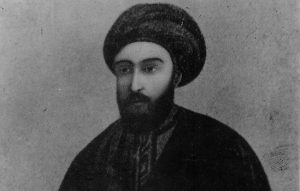The Baha’i cult since its emergence has been recognized among the Muslims as an ideological deviation. The Baha’i cult is a branch of Babi cult. The founder of the Bahaism faith is Mirza Hossein Ali Nouri known as Baha’u’llah and it has been named after this epithet.

After the claim of Babism by Ali Mohammad Shirazi, he was among the first people who converted to Babism and became the most active Babi people and resorted to promote Babism especially in Noor and Mazandaran. Some of his brothers including the younger one Mirza Yahya known as “Subh-i-Azal” or the morning of eternity as a result of his propagandism. After the execution of Ali Mohammad Bab on the order of Amir Kabir, Mirza Yahya claimed to be the Bob’s successor. Apparently, Yahya wrote letters to Ali Mohammad Bob, explaining the activities of the Bob followers. In response to these letters, Ali Mohammad Bob sent a will for Yahya, declaring him as his executer and successor. After Bob, the Bobi followers believed in Mirza Yahya known as Subh-i-Azal as his successor, and since he was just nineteen years old at that time, Mirza Hossein Ali took over the affairs. For quelling the Babi sedition, Amir Kabir asked Mirza Hossein Ali to leave Iran for Karbala and he left for Karbala on the lunar month of Sha’ban of 1267; but a few months later after the dismissal and murder of Amir Kabir and the appointment of Mirza Agha Khan Nouri as Prime Minister in the lunar month of Rabi’al Awal of 1268, he returned to Tehran upon Nouri’s recommendation.
In the same year, the Babis tried to assassinate Nassereddin Shah which led to their arrest and execution, and sine there were evidences on the role of Hossein Ali in plotting the assassination, he was also arrested. Hossein Ali took refuge in the Russian Embassy and was personally supported by the ambassador.
Finally, with the agreement of the Iranian government and the Russian ambassador, Mirza Hossein Ali was transferred to Baghdad, and Bahaullah was saved from death with the support of the Russian government. After arriving in Baghdad, he wrote a letter to the Russian ambassador, thanking him and the Russian government for their support. In Baghdad, the British Consul and a representative of the French government met with Baha’u’llah and expressed their support for his government.
Mirza Yahya, considered by most of the Babis as the undisputed successor of the Bab, secretly went to Baghdad in Dervish garb and arrived in Baghdad four months earlier than Baha’u’llah. At this time, Baghdad, Karbala and Najaf became the main centers of Babian activities and their population was increasing day by day. At this time, some Babis made the claim of being “the Manifestation of God.” We know that Ali Muhammad Bab had promised the appearance of another person after him and called him “the Manifestation of God”, asking the Babis to believe in him.
The killings that were common among the Babis, as well as the stealing of the property of the pilgrims of the holy sites in Iraq, and also, the disputes between the Babis and the Muslims, caused the Iraqi people, and especially the Iranian pilgrims, to complain, and the Iranian government called on the Ottoman government to expel the Babis from Baghdad and Iraq. Thus, in the early lunar year of 1280, the Babi sect moved from Baghdad to Istanbul and after four months to Edirne (a city in Turkey).
At this time, Mirza Hossein Ali claimed the position of “Manifestation of God” for himself and from here, the main dispute and separation and segregation began among the Babis. The Babis who did not accept his claim and persisted on the succession of Mirza Yahya Subh-i-Azal were called Azali, and those who accepted the claim of Mirza Hussain Ali Baha’u’llah were called Baha’is. By sending his writings to different places, Mirza Hossein Ali officially called on the Babis to accept the new faith, and very soon, most of them converted to the new faith.

The disputes between the Azalis and Baha’is intensified in Edirne with insults, slander, defamation, and murder spreading, and each side revealing many secrets to the other. Finally, for putting an end to these conflicts, the Ottoman government exiled Baha’u’llah and his followers to Acre in Palestine and Subh-i-Azal to Cyprus. Baha’u’llah died in Haifa at the age of seventy-five in 1308 AH. After announcing his “Manifestation of God”, Mirza Hossein Ali sent letters (tablets) to the sultans and religious and political leaders of the world and made his various claims. His most prominent position claimed by him was Divinity and Deity. He called himself God of Gods, the Creator of the world, the one who is “lam yaeld va lam yulad” (he was neither nor born), the imprisoned alone God, the true God, and “Rabb-e Ma Yora va ma la yora” or “God of what is seen and not seen”.
After his death, his followers spread the same claims about him, and as a result, his followers believed in his deity and took his grave as their Qibla. In addition to claiming lordship, he introduced a new Sharia or law and wrote Kitab-i-Aqdas or the Holy Book, which is considered by the Baha’is as “Nasekh Jami Saha’ef” or “copyist of all scriptures” and the source of all commandments and prohibitions. Baha’u’llah’s most important book was Iqan, which he wrote during his last years in Baghdad to prove the authority of Ali Muhammad Bab.
https://mohtadyan.com/






